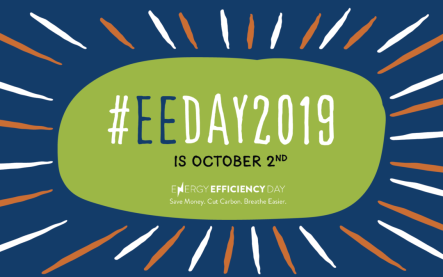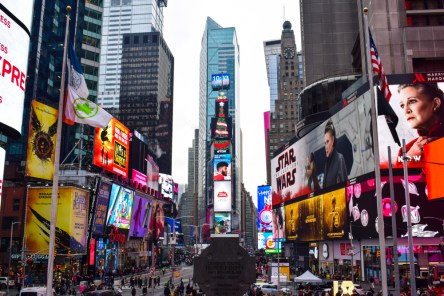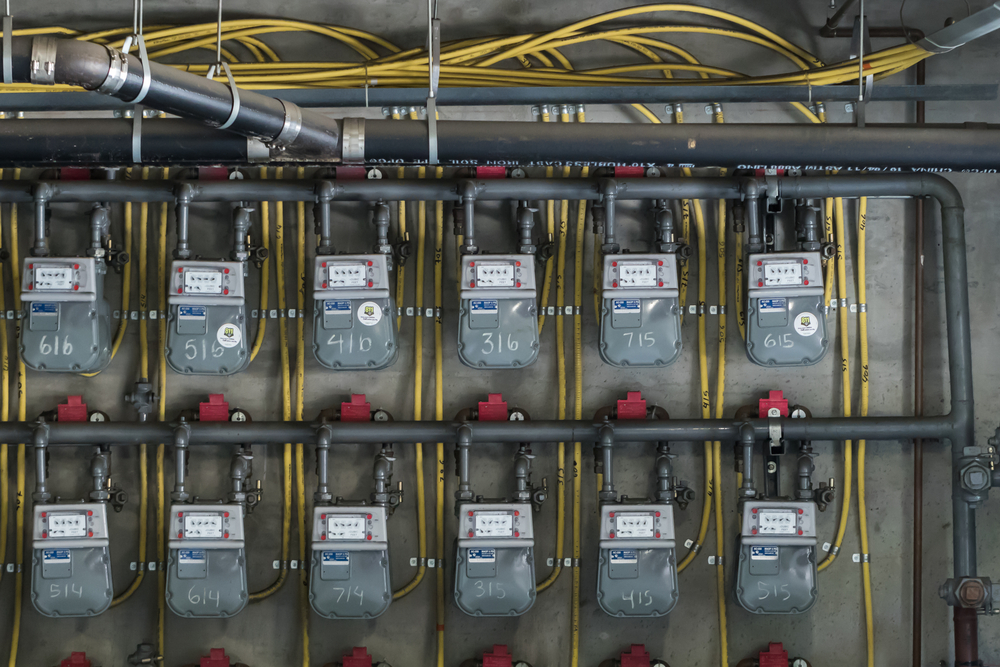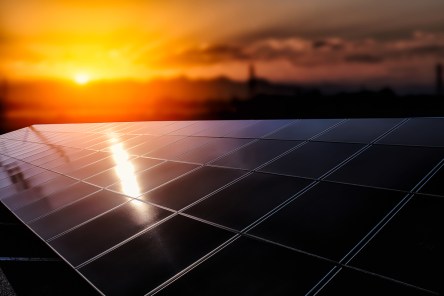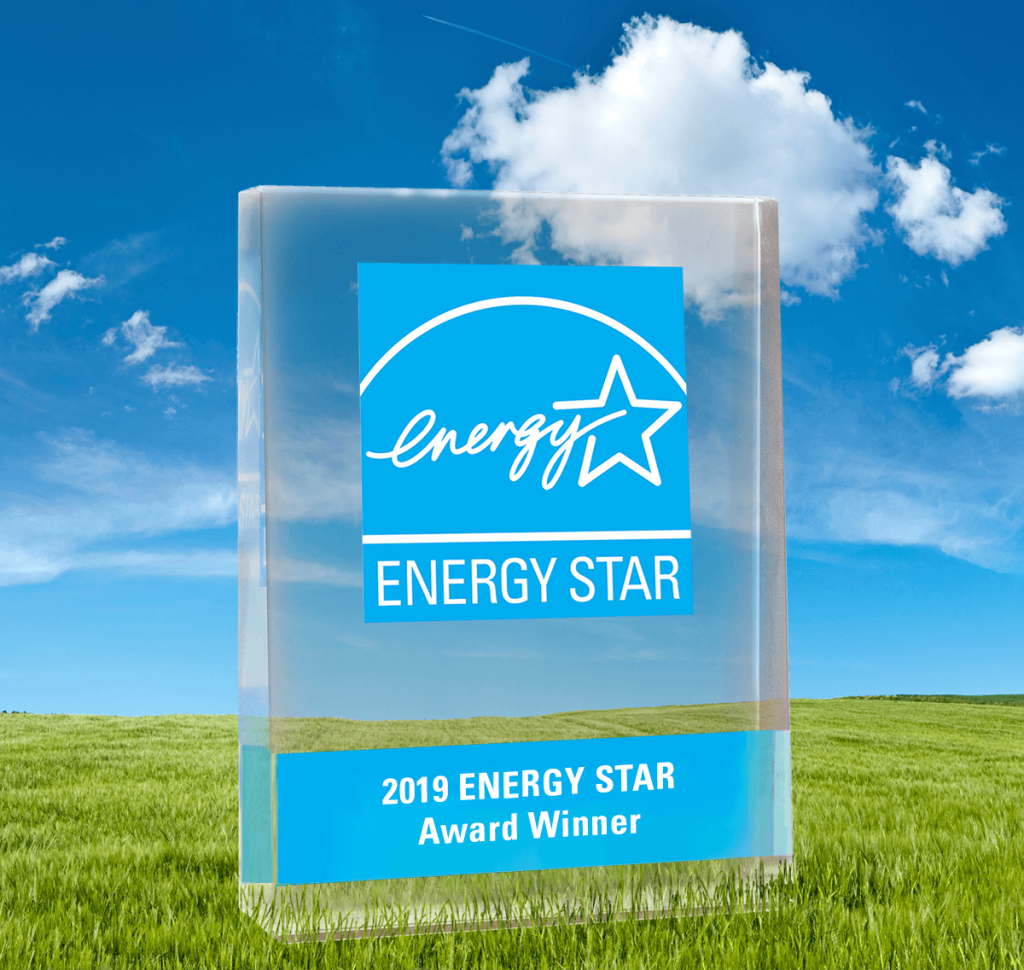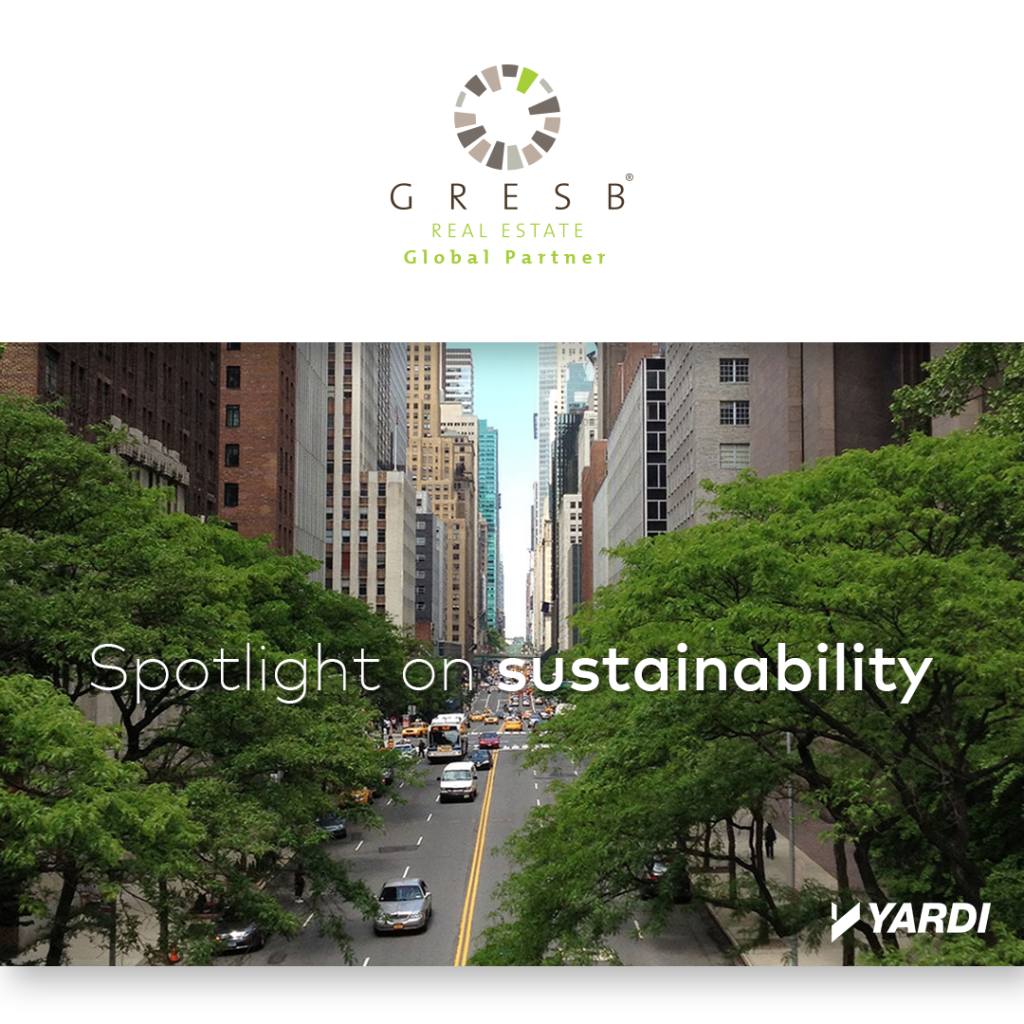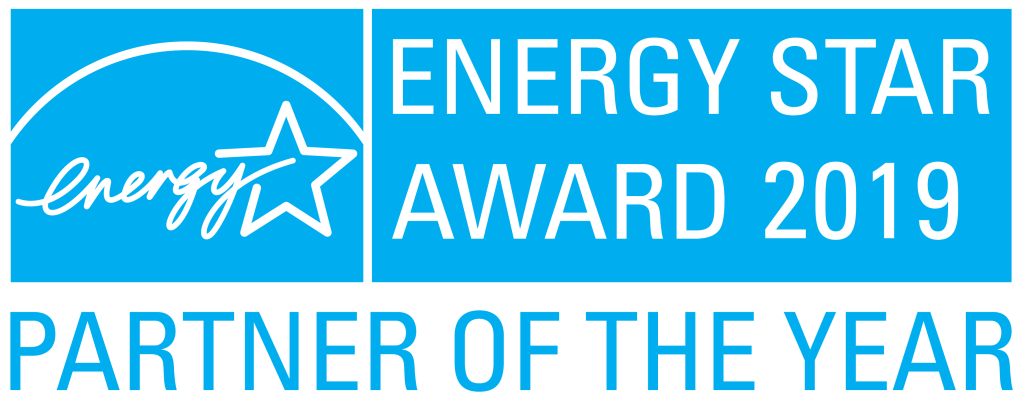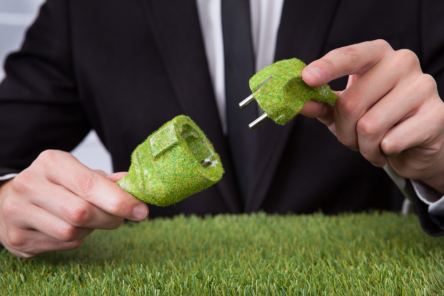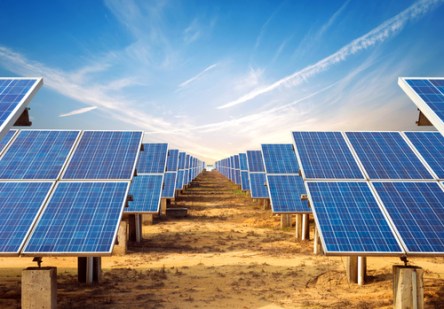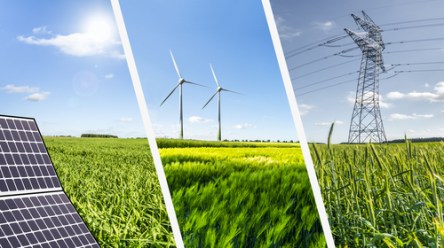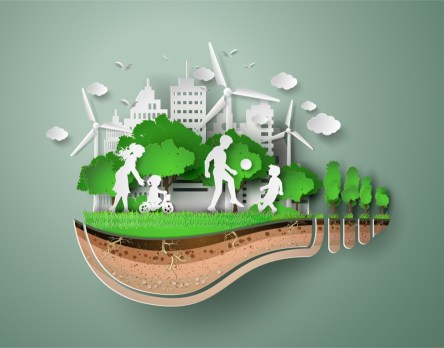If sustainability is a part of your branding, the holidays are your time to shine. Did you know that from Thanksgiving to New Year’s Day, Americans toss about one million extra tons of trash each week? The additional waste is mostly holiday packaging, wrapping, and shipping supplies. Americans are particularly wasteful with energy during the holidays, too. Households in the US consume more energy during the holidays that some countries do in a year. Multifamily properties can set new precedents for the holidays. Below are six tips to make your property more environmentally friendly and cost efficient. By implementing conservation techniques and rewarding resident participation, we can break the tradition of holiday waste. Sustainable Switches, Great and Small Do you have a healthy budget for sustainable upgrades, or are you’re advocating for Mother Earth with your bare hands? Below are a few tips for budgets of any size. Make the Switch to LEDs If you haven’t already made the switch to LED lights, do so. This includes your holiday lighting. According to Eartheasy, the average business can save about $3,700 per year, per 25 bulbs. Each LED bulb last up to 200,000 hours, meaning that you replace bulbs and strings of lights less often. Step Up Recycling After the holidays, host recycling hauls for residents. For example, invite residents to bring their outdated electronics down to a truck near the leasing office. It’s then a single trip to recycle tablets and smart phones for the entire community. (Many electronics store offer recycling services.) You can also invite a tree specialist to the property to clear Christmas trees. Some companies will bring a mulching truck and recycle trees on the spot! Improve Utility Billing Some residents decorate like there is no tomorrow. Others leave town or skip the décor...
Beat the Cold
Winter Energy Tips
Those summer tees and shorts are but a memory. With fall here and winter on deck, how do you stay comfortable at home without spiking your utility bills? Here’s a compilation of tips from the U.S. Department of Energy and other sources. Study up. Conduct an energy audit to find out where you can save and invest for long-term energy savings. Don’t miss sunshine. Open curtains on your south-facing windows during the day to allow sunlight to naturally heat your home. Close them at night. End the draft. According to energy services marketplace Choose Energy, up to 30% of a home’s heat can escape through low-efficiency windows. Cold air can lead into a home through cracks and gaps in windows and doorways. Covering windows and sliding doors with clear plastic film can cut about 14% from your heating bill. Install tight-fitting, insulating drapes or shades on windows that still feel drafty. Seal any gaps with caulk or weather-stripping. Check the equipment. Have your heating system serviced. Replace furnace and heater filters as needed. Air filters should be replaced monthly. Clean the flue vents on wood- and pellet-burning heaters. Reset the temp. When you’re home and awake, set your thermostat as low as possible to remain comfortable. Turn it back 10° to 15° at nighttime and when you’re gone. A smart or programmable thermostat makes this easy. Get a smart ’stat. Almost half of monthly energy costs are controlled by your thermostat, according to Efficiency Vermont, and Choose Energy says a programmable thermostat can cut heating costs by up to 12%. Cut your losses. Close your fireplace damper when not in use to keep warm air from escaping up the chimney. Install tempered glass doors and a heat-air exchange system for the fireplace. Add caulking around the fireplace...
Make Energy Efficiency Fun...
Tips from ENERGY STAR
Commercial building owners and managers, especially those equipped with the Yardi Pulse Suite, can lead the way in optimizing energy consumption. But with tenants accounting for as much as 80% of the energy used in office buildings, energy efficiency requires nothing less than a full team effort. ENERGY STAR® suggests making the quest for energy efficiency collaborative, stimulating, rewarding and—last but certainly not least—fun for tenants. Advice in the program’s “8 Great Strategies to Engage Tenants on Energy Efficiency” guidebook from 2016 includes: Be transparent and open with timely information. That includes sharing energy efficiency goals, building energy use data and ENERGY STAR scores. Vornado Realty Trust, for example, launched an energy information portal that enables submetered tenants to access their energy usage profile and data. JLL publishes an annual building environmental report while Wells Real Estate displays ENERGY STAR scorecards that report progress toward sustainability goals. Leverage the ENERGY STAR brand, which the U.S. Environmental Protection Agency says is recognized by 80% of Americans. The program’s resources include tip sheets, interactive tools and other guidance for inspiring tenants to provide energy consumption information. Beacon Capital Partners Inc. and Cushman & Wakefield are among the property managers that apply ENERGY STAR branding to its posters and other materials. ENERGY STAR also offers opportunities for positive visibility through certifications, competitions and other recognition. Educate tenants on their energy use and impacts and help them identify opportunities for improvement. Examples among industry leaders include CBRE, which sends letters rich with energy-saving tips; Beacon Capital, which hosts a plug load educational program; and Liberty Property Trust, which created a green guide web portal. Meanwhile, Cushman & Wakefield offers tenants a green office tool kit, Bentall Kennedy distributes a sustainable tenant improvement manual and JLL sponsors a “go...
NYC Climate Law
Yardi Coaches for Compliance
New York City’s Local Law 97, part of a package of legislation comprising the Climate Mobilization Act, was enacted in May. It’s designed to drastically reduce carbon emissions by imposing stringent carbon emission limits for most commercial properties over 25,000 square feet. Impacting more than 57,000 buildings and aiming to reduce carbon emissions 80% by 2050, the statute stands as “the most ambitious climate legislation for buildings enacted by any city in the world,” according to The Urban Green Council, a New York-based sustainability advocacy group. The law’s emissions calculations consider the total building load, not just base building energy usage. With tenants accounting for well over 50% of usage in many buildings, that means property owners should “carefully vet their business plans and be sure they are planning for this environment, since it represents a significant change for both owners and their tenants,” said James Nelson and Terri Gumula of commercial real estate company Avison Young, writing in Real Estate Weekly. Estimates of what city landlords will spend to comply with Local Law 97 run to $20 billion and up. With the first compliance period starting in 2024, that group is on the clock. Webinar offers resources Yardi energy experts Brian Fridkin and Maria Solobay recently presented a webinar hosted by Commercial Property Executive to give property managers tips on easing the transition to Local Law 97. A representative from the New York State Energy Research and Development Authority (NYSERDA), a public benefit corporation that promotes energy efficiency and renewable energy sources, also spoke about programs already in place in the state. The presenters listed prescriptive conservation measures required by the new law including adjusting temperature set points, repairing heating system leaks, insulating pipes and installing timers on exhaust fans. Additional steps supporting compliance include embedding efficiency requirements in future leases, upgrading lighting and lighting sensors in tenant spaces, and friendly energy-saving competitions. However, Fridkin pointed out, “For many buildings, just completing the required measures won’t be enough to meet the emissions limits in the law.” Owners will also need to invest in optimizing heating, ventilation and air conditioning systems, fault detection and diagnostics, and metering equipment. Solar or wind generation installations are other options. “You can have discussions with tenants about upgrading their lighting or installing occupancy sensors in their spaces, which would reduce their monthly energy bill as well as move toward complying with the law. And you can have tenant energy competitions to see who can reduce their emissions the most. You might also work on switching out tenant HVAC units for more efficient ones or tying in a tenant’s HVAC to the building’s system,” Fridkin said. A key first step toward compliance is implementing real-time energy management (RTEM) to collect live and historical building performance data. This data helps building owners optimize the building’s energy consumption (ultimately reducing greenhouse gas emissions) and prove how the property is performing. RTEM systems can help improve ENERGY STAR® scores, a key consideration because the building types covered under Local Law 97 are already required to complete ENERGY STAR benchmarking every year under another law. Learn how Yardi technology and NYSERDA incentives support building managers who seek to leverage RTEM. Yardi is an approved vendor for NYSERDA’s RTEM program and an ENERGY STAR Partner of the...
Energy’s Future
Looking to 2050
What’s the future of worldwide energy consumption? A recently published study of international energy markets through 2050 offers some clues. The U.S. Energy Information Administration (EIA), the U.S. Department of Energy’s statistical and analytical agency, conducts annual long-term assessments of world energy markets. The EIA characterizes its compilation of current trends and relationships among supply, demand and prices in the future as “a reasonable baseline case to compare with cases that include alternative assumptions about economic drivers, policy changes or other determinants of the energy system.” Here are some projections from International Energy Outlook 2019: Global consumption World energy consumption will grow nearly 50% between 2018 and 2050, with most of this expansion coming from regions where strong economic performance is driving energy consumption. Asia represents the largest and fastest-growing region for energy consumption. The shift of manufacturing centers to Africa and South Asia, especially India, will spur energy consumption. The industrial sector, including mining, manufacturing, agriculture and construction, will account for more than 50% of global end-use energy consumption between 2018 and 2050. Buildings’ share of the world’s delivered energy consumption will increase from about 20% in 2018 to 22% in 2050. Renewable energy Renewables (including hydropower) will be the fastest-growing source of electricity generation until 2050, rising by an average of 3.6% per year. Wind and solar will account for over 70% of total renewables generation by 2050. Electricity generation from wind and solar sources will represent renewable energy sources’ biggest increases until 2050, reaching 6.7 trillion and 8.3 trillion kilowatt-hours (kWh), respectively, as these technologies become more cost competitive and receive support from government policies in many countries. Worldwide renewable energy consumption will increase 3% per year to 2050. Nuclear consumption will increase 1% per year. Hydropower’s share of renewables generation will fall from 62% in 2018 to 28% in 2050 because resource availability in Organization of Economic Cooperation and Development (OECD) countries and widespread environmental concerns limit the number of new mid- and large-scale projects. (OECD is a 36-member group of countries with market economies.) Electricity Electricity generation will increase 79% until 2050, with consumption increasing in all end-use sectors. On average, consumption of electricity in more-developed OECD economies and developing non-OECD economies will grow 1% annually until 2050, while non-OECD consumption will grow 2.3% annually. Electricity will remain the main source of marketed energy consumption in the residential sector. Its use will grow by 2.5% per year globally as rising populations and standards of living in non-OECD countries increase demand for appliances and personal equipment. The transportation sector will consume more electricity as more plug-in electric vehicles enter the fleet and as electricity use for rail expands. Petroleum and other liquid fuels will remain the principal transportation fuel, however. Petroleum and liquids As a share of primary energy consumption, petroleum and other liquids will decline from 32% in 2018 to 27% in 2050. On an absolute basis, liquids consumption will increase in the industrial, commercial and transportation sectors and decline in the residential and electric power sectors. Residential natural gas consumption will grow by 0.7% per year, influenced by increasing use of the fuel for heating. Read the full International Energy Outlook 2019 report. Learn how Yardi technology contributes to energy conservation and sustainability...
Energy Efficiency Day...
It’s Happening Now
If encouragement to “save money; cut carbon; breathe easier” seems more prominent than usual where you live and work, it’s because today is Energy Efficiency Day, and that’s the key message the event’s organizers are promoting. A nationwide alliance of energy efficiency advocacy groups sponsors Energy Efficiency Day to share “tips, tools and stories that promote the multiple benefits of energy efficiency, from lower costs to healthier homes,” as stated in the event’s website. About 450 local governments, universities, organizations, corporations and utilities are hosting an array of activities including expos, energy-saving device installations, free energy assessments and symposia with thought leaders. Organizers of Energy Efficiency Day, an annual occurrence since 2016, encourage people to stage their own events, such as a “treasure hunt” check of home appliance, lighting and insulation efficiency, and to share their experiences from the day (#EEDay2019). Technologies that lower energy bills and make properties more comfortable are part of Energy Efficiency Day’s focus—and have long been a staple of Yardi’s business. The Yardi Pulse Suite, an integrated set of software solutions, supports sustainability efforts by maximizing efficiency across all property types. “October 2 is Energy Efficiency Day. But efficiency is year-round,” says the event’s website, which pretty well summarizes Yardi’s approach as well. Every month last year, for example, the company benchmarked more than 1,700 buildings across 47 client portfolios in 27 compliance jurisdictions in ENERGY STAR® Portfolio Manager®. A grant to the BOMA Water and Waste Challenge helped property owners and managers improve their water and waste management practices. Ongoing leadership, innovation and commitment to environmental protection earned Yardi designation as an ENERGY STAR Partner of the Year. The company joined GRESB’s Global Partner program this year as a sustainability consultant and solution provider. Yardi promotes energy management...
Reducing Energy Consumption
Good for the bottom line and the planet
Utility expenses are one of the biggest controllable expenses in commercial buildings. Yet an average commercial building wastes 30% of its energy consumption due to inefficiencies and lack of proper management. This highlights an opportunity to take a more proactive approach on measuring energy consumption and implementing solutions to improve how a commercial building operates. A reduction in energy consumption is good for the bottom line and is great for the environment. It is estimated that a reduction of between 25% and 30% in real estate energy emissions could in turn help the US and other nations hit the Paris Agreement targets within the next 10 years, which would be a remarkable achievement. Yardi has developed a comprehensive energy management platform for commercial and build-to-rent real estate portfolios called Yardi Pulse. We believe having a better understanding of utility and energy consumption is an important ‑ first step in developing strategies to reduce consumption and improve efficiencies in how a building operates. Our energy solutions have been available in the US, for a number of years and are currently being deployed to international markets, including the UK. Yardi solutions have traditionally been focused on servicing the back office of real estate investors, owners and operators to manage their property portfolios using Voyager – our enterprise resource planning platform. This focus on real estate has allowed us to gain a deep understanding and data set of how buildings are managed, the expenses associated with utilities and the costs associated with running the mechanical and plant operations in a building. Yardi Pulse has been created as a software-driven energy strategy that is comprehensive in terms of functionality, easy to use and provides a short payback period for clients. Yardi Pulse has three core functional modules. Utility Expense Management is crucial to understanding and documenting energy consumption in a building and across a portfolio. By leveraging machine learning to provide automated validations to ensure that utility expenses are correct, late fees, bill errors and over payments can be reduced. Detailed consumption data in turn helps provide valuable portfolio benchmarking. This granular consumption data in turn becomes the starting point to build an effective energy strategy. Energy Intelligence is the second building block, which is fuelled by real-time data being collected through Internet of Things (IoT) real-time metering devices installed in the buildings. This enables visibility to compare usage, savings and spikes between time periods across an entire portfolio to highlight outliers. This data allows clients to make incremental but powerful changes. Energy efficiency Energy Automation is the third building block, designed to maximize building performance with energy automation technology that prevents HVAC system problems by proactively detecting faults and providing alerts. This also allows clients to automate their heating and cooling to optimize tenant comfort and minimize wasted HVAC costs. Tackling the energy efficiency of a building can be daunting, as it is often difficult to understand where to start or how to calculate the benefit of an investment. We have found that an incremental strategy by focusing on first gaining visibility into consumption and demand can reduce costs by 2% to 5%. Over time, building owners and operators can identify their highest cost/highest ROI assets as candidates for energy automation. This then leads to additional cost savings exceeding 10% to 15%. We expect cost savings to increase, as we further develop artificial intelligence and machine learning engines to analyse larger data sets on consumption as well as other data points that will be collected with the deployment of additional IoT sensors in buildings. The market has also seen an increase in demand from investors and tenants for more energy efficient buildings. From an investor perspective, an energy-efficient building is one of their investment criteria. Not only does an energy-efficient building increase the appeal of the investor, but it also tracks higher-value tenants that rank sustainability and energy efficiency in their decision...
Sunny Outlook
Space-Based Power
Solar power is a burgeoning alternative energy source that accounts for 1.6% of total U.S. electricity generation and encompasses enough installed capacity to power 12.3 million homes. It’s the second-fastest source of new generation on the U.S. power grid, but it’s not flawless. Arrays that capture solar energy don’t work at night or when obscured by cloud cover, atmosphere or seasonality. The United Nations estimates the global population will be 9.6 billion by 2050, so the rush is on to find new ways to generate large quantities of clean energy. For decades, scientists have explored putting solar arrays where night never falls and clouds don’t form and power transmission need not be interrupted by fickle weather or unfavorable orbital tilt. Specifically, in geostationary or low-Earth orbit, where satellites could capture solar energy, convert it into a microwave or a laser and beam it to Earth. Ground-based receivers would then convert the energy into useable electricity and add it to the electric grid. “If solar power is going to be the principal so-called ‘dispatchable’ baseload source of power that replaces today’s fossil-fuel-powered electric-generating stations, inherently you have to have the generating source be available all the time,” environmental scientist Dr. Deanna Conners wrote in 2018. Efforts to put space-based solar power generation into production have been hindered by cost and technology impediments. But recent developments are bringing the concept closer to reality. In 2018, scientists at the California Institute of Technology announced that they created a prototype lightweight tile, the building block of solar arrays capable of harnessing and transmitting solar energy from space. Earlier this year, China announced plans to place the first solar power station in geostationary orbit by 2050. Other countries in Asia and Europe are working on their own projects. A...
Nearing Zero
Energy Efficiency Webinar
The processes and technology needed to start moving to “net zero” buildings—those that produce enough renewable energy to meet their annual energy consumption requirements—are available today. How to make them widely understood, accepted and implemented was the focus of a recent webinar featuring Akshai Rao, Yardi vice president of procure to pay and energy, and other industry experts. ENERGY STAR® estimates that the average commercial building wastes 30% of its energy consumption. Real estate is the fourth largest generator of greenhouse gas emissions; if that industry alone cut its emissions by 30%, the U.S. could hit the Paris Agreement targets, Rao told the webinar audience. This means there are significant monetary as well as societal incentives for achieving net zero. “Because energy is a building’s second largest controllable cost, it can really eat into investor returns. Having a cohesive energy strategy is one of few things the real estate industry can do from an operations perspective that increases portfolio value,” Rao said. Any hope of achieving a net zero building or portfolio, he said, starts with understanding a building’s load factors and prioritizing which buildings to invest in, which is based on benchmarking the portfolio against the industry with ENERGY STAR. ”There’s so much cost and consumption data to be gained just from utility bills. Rather than just approving and paying them, you can achieve portfolio-wide insights and property cost/consumption trends that help identify capital investment that can reduce consumption,” Rao said. Properties can couple this data with real-time metering to visualize the demand profile of a building, which can highlight tactical actions for reducing spend. Once you have data on your portfolio, the next step is to identify properties to invest in for the highest energy savings return. Several solutions on the market...
Energy Automation
Pinnacle Uses Yardi Energy
Dallas-based multifamily community manager Pinnacle sought to reduce utility late fees and increase vacant utility cost recoveries at 170,000 residential units that it manages. “We needed to automate the entire process—payables, receivables, consumption data analysis and reporting that drilled down to a granular level of detail,” said Nicole Ellery, the company’s ancillary performance manager. Doing all this required replacing its cumbersome manual utility consumption tracking and billing with the Yardi Energy Suite. One element of the suite, Yardi Utility Expense Management, receives, validates and completes payments for Pinnacle’s utility bills. Another part, Yardi Utility Billing, monitors and bills residents for their utility consumption, which helps the company recover vacant unit costs, monitor usage, forecast utility revenue and cut waste with consumption alerts. How has the Yardi Energy Suite worked out for Pinnacle? The bottom line, Ellery said on a utility expense management panel at the most recent Yardi Advanced Solutions Conference (YASC), is “lower late fees across the board.” That happened because the comprehensive solution for utility billing, energy management and submeter data administration helps the company “track how properties are performing with line-by-line data down to the individual meter level as opposed to only invoice data.” “When we onboard a new property, we can see red flags such as high consumption on a meter and follow up with an investigation,” Ellery said. “Our property managers and accountants can drill down to each general ledger account and invoice if anything looks off and see what’s going on. We can see gradual increases in consumption and process invoices as soon as they come in.” She added, “We have saved thousands of dollars every year by nearly eliminating late fees. The suite vastly simplified our vacant unit recovery process, so it maximizes income too. We’d be...
Retail Rewards
Macerich + Pulse
The sustainability framework that leading retail property owner, operator and developer Macerich operates under calls for eliminating energy waste and nearly eliminating emissions, water waste and landfill impact. Evidence of Macerich’s success in translating these “Innovating to Zero” principles into best practices includes a No. 1 GRESB Benchmark ranking for four years running among North American retailers and a Top 30 onsite generation designation in the U.S. Environmental Protection Agency’s Green Power Partnership. The Santa Monica, Calif.-based S&P 500 company has generated 16 megawatts of grid relief and saved more than 300,000 KwH annually with solar panel installations and LED retrofits. It’s the only U.S. retail real estate company to earn the highest “Climate A List” ranking from CDP (formerly the Carbon Disclosure Project), the world’s most comprehensive collection of self-reported environmental data. Another accolade came in the form of a Commercial Real Estate Digital Innovation (“Digie”) Award in the Most Intelligent Building Project category that Macerich received at the Realcomm ׀ IBCon conferences in June. Macerich recently marked another notable milestone: the 10-year anniversary of a multifaceted energy management sustainability program that has reduced the company’s environmental impacts while squeezing every ounce of efficiency from its operations. The company’s plan called for using advanced energy management software to combine internet of things data with additional logic and analytics functionality. The goal was to turn disparate charts, graphs and reports into coherent, actionable intelligence for operations teams and managers across 51 million square feet of real estate in 15 U.S. states. The software central to achieving that vision, the Yardi Pulse Suite, integrated Macerich’s central energy management systems with utility billing, energy data collection and the Yardi Voyager property management and accounting system. The suite enables connection, analysis and display of building information from Macerich’s...
Energy Education
Yardi Sponsors CHESC
Yardi didn’t have to venture far recently to share sustainability expertise with an audience eager for innovative energy efficiency ideas. The company provided top-level sponsorship plus an exhibit and speaker for the California Higher Education Sustainability Conference (CHESC), a forum for research and case studies at the University of California, Santa Barbara, just a few miles from its headquarters. The four-day gathering included more than 700 California higher education professionals including sustainability coordinators, construction, energy and environmental managers, engineers and facilities directors along with faculty and students. Experts from Yardi shared how the Yardi Pulse Suite, an integrated set of software solutions, supports sustainability efforts by helping reduce energy costs and consumption across all property types. They provided examples of the company’s success in helping property owners benchmark to ENERGY STAR® and make energy efficiency investments, and shared how Yardi promotes energy efficiency and sustainability through webinars, articles in trade publications, educational sessions at industry conferences and other activities. CHESC attendees learned that Yardi further displayed its sustainability sensibilities by achieving ENERGY STAR certification for its headquarters in 2018 and installing a real-time online dashboard that shows consumption data for each building at the corporate campus. In April 2019, the company’s initiatives earned designation as an ENERGY STAR Partner of the Year. “It is our hope that tools like ours will continue to help property owners and managers be more successful with energy initiatives and comply with new mandates like the California 2030 Green Building Goals,” Lexi Beausoleil, marketing campaigns specialist for Yardi energy solutions, told the conference, adding that technology can be a powerful tool for engaging people to “see the impact of their behaviors and empower them to make better choices.” Other presenters at the conference’s opening session included Dominique Hargreaves, deputy...
Climate Cleanup
New NYC Emissions Law
The Climate Mobilization Act is a package of legislation designed to drastically reduce carbon emissions from New York City’s commercial properties. It covers everything from closing high emitting power plants and installing renewable energy sources to limiting emissions from buildings of over 25,000 square feet. A major component of the proposal, Local Law 97 (formerly Bill 1253), was approved by the city council in April 2019 and focuses on greenhouse gas emissions limits for existing buildings. We asked Brian Fridkin, a Yardi Client Services Division team leader in Yardi Energy, for an analysis of LL 97. Q: How will this bill impact Yardi clients in New York City? Fridkin: Many clients who own or manage any commercial property of over 25,000 square feet will have to comply with the law’s carbon emission limits starting in 2024. That’s five years away, but they need to act now to meet the deadline. To comply, property owners will have to calculate their building’s carbon limit, which is based on the square footage of their building. They will then have to calculate their current emissions based on the emission coefficients set in the law. To avoid penalties, they will have to make reductions in the next five years that equal the difference between their emissions and limit. What’s more, the emission limits change every five years. The limits for 2030-2034, for example, are about half of those for 2024-2029. That’s good because property owners can ease into the changes, but they must constantly prepare for upcoming limits. Additionally, there are minimum requirements that a building must meet by 2024, which include adjusting temperature set points for heat and hot water, repairing system leaks, insulating pipes, ensuring steam traps are operating correctly, complying with lighting standards and weatherizing windows....
Real-Time Energy Management
Benefits Explained
Real-Time Energy Management (RTEM) systems continuously collect live and historical building performance data through a cloud-based system. Building owners can use this data to optimize the building’s energy consumption and show in real time how the property is performing. By reducing energy consumption, RTEM systems also help reduce greenhouse gas emissions and a building’s overall carbon footprint. This is particularly important to New York state property owners who, with the help of partners like Yardi, can qualify for incentives from the New York State Energy Research and Development Authority (NYSERDA), a public benefit corporation that promotes energy efficiency and renewable energy sources, when they install RTEM systems. Annette Durnack, regional director for Yardi Energy, explains how Yardi fits in with RTEM systems and NYSERDA. Q: What are the benefits of an RTEM system? Durnack: RTEM systems help building owners and operators manage energy consumption, so they can operate their buildings more efficiently and reduce energy consumption. They centralize energy usage tracking; monitor heating, ventilation, and air conditioning systems; and manage the scheduling and operation of building equipment. They detect equipment faults, so they can be addressed before they become failures or impact tenant comfort. They also help track the effect of energy conservation measures. RTEM systems can help improve ENERGY STAR® scores and contribute to LEED certifications. In the state of New York, properties that install an RTEM system through qualified vendors such as Yardi may be eligible for significant incentive funding through NYSERDA. Q: What kinds of RTEM incentives does NYSERDA offer building owners? Durnack: The NYSERDA RTEM program provides up to $300,000 per electric utility account via a 30 percent cost-share for projects submitted by qualified RTEM vendors. NYSERDA provides funding for the installation of RTEM hardware as well as the provision of software and ongoing services. Additional funding may be available for projects that demonstrate the integration of multiple interoperable systems or include a commercial tenant in the project scope. Q: How can Yardi help building owners obtain these NYSERDA incentives? Durnack: Yardi is an approved vendor for NYSERDA’s RTEM program, giving building owners the option of employing the Yardi Pulse Suite to improve their building’s performance and to qualify for RTEM project funding. Yardi submits all required project documentation to NYSERDA in order to qualify and secure the incentive. Once approval is obtained, Yardi offers a turnkey solution for installing and servicing an RTEM system. Q: What benefits can building owners expect from the Yardi Pulse Suite? Durnack: Our Pulse Suite includes several energy management software solutions that can help reduce your energy costs and consumption. Most Yardi clients experience HVAC energy savings in the range of 10-15 percent. Yardi Utility Expense Management, for example, provides access to all energy cost and consumption data, enabling emission calculations and contributing to benchmarking for ENERGY STAR® reporting. Yardi Pulse Real-Time Metering delivers visibility into real-time demand and consumption that can be used change how a building operates. Yardi Pulse Active EE optimizes HVAC system performance by making incremental changes to set points every 30 seconds, which reduces consumption while maintaining tenant comfort. Yardi Pulse Fault Detection and Diagnostics helps prevent HVAC system equipment failures before they cost money or impact tenant comfort. We also offer emission calculations consulting, renewable energy credit purchasing, and energy procurement services. Our Yardi energy experts can help you select the right solutions that will best meet your needs. Click here for more information on NYSERDA’s RTEM program. Download a Yardi Pulse brochure for more information on energy management software...
Sunset on Solar ITC
Step Down Begins 2020
This is the last year that businesses are eligible for the 30 percent federal investment tax credit (ITC) for solar—sort of. A few simple steps can position businesses take advantage of the solar ITC before step downs begin next year. The Tax Benefit Step Down Tax benefits have motivated sustainable upgrades over the past ten years. The 30 percent ITC was the most popular. The ITC “provides owners of solar systems with the ability to offset tax payments owed to the IRS in an amount equal to 30 percent of the eligible cost basis of a solar photovoltaic system,” summarizes Smart Energy Decisions. Beginning in 2020, however, the tax benefit will gradually decrease. The first step decline is to 26 percent for projects that “begin construction” in 2020. In 2021, the benefit declines to 22 percent. All projects starting in or after 2022 receive only 10 percent. “The good news is that there is currently a 30 percent ITC for the cost of the system for those installing solar before December 31st, 2019,” emphasized Ray Segars, CEM, consultant for energy and sustainability on Yardi’s energy team. He added, “The emphasis is on credit. This is a credit not a tax deduction. Tax deductions reduce taxable income, thus reducing associated taxes. Tax credits are more valuable because they reduce the actual tax bill dollar for dollar.” Gaining the Advantage on the Solar ITC Notice 2018-59 details strategies to help corporations navigate the step downs with financial finesse. Firstly, “beginning construction” is a surprisingly loose term. There are two ways that a project may begin and still qualify for the year’s tax benefit. The Physical Work Test entails beginning physical work on your solar project The Five Percent Test entails paying or incurring 5 percent or...
Standard of Excellence
Energy Star Awards
The U.S. Environmental Protection Agency’s designation of Yardi as a 2019 ENERGY STAR® Award recipient in the service and product provider category was previously announced in this space. The award recognizes the company’s outstanding contributions to protecting the environment through superior energy efficiency achievements. More than 180 organizations across a broad swath of industries joined Yardi in receiving ENERGY STAR awards in April. Some of their achievements that ENERGY STAR documented are summarized below. Along with saving more than 5.6 million kilowatt-hours from LED retrofit and solar programs, Chicago apartment community developer and manager AMLI Residential engaged its leasing staff to educate residents and prospective residents on the benefits of living in an ENERGY STAR-certified community. Boston Properties incorporated cost recovery for ENERGY STAR certification, sub-metering of high-intensity tenant equipment and tenant energy disclosure through ENERGY STAR Portfolio Manager® into its master lease form. The self-administered and self-managed real estate investment trust also achieved ENERGY STAR certification for 77 properties in 2018. Bozzuto Management Company of Greenbelt, Md., pursued 100% benchmarking in ENERGY STAR Portfolio Manager for all managed assets and achieved energy reductions of more than 3% and 2% in site and source energy usage, respectively, across its portfolio in 2017, which equates to a calculated energy cost savings of more than $4 million. The manager of more than 255 multifamily communities also communicates sustainability and ENERGY STAR issues through its internal Bozzuto in the Know program. CommonWealth Partners, a Los Angeles private real estate investment, development, management and operating company, developed an internal Battle of the Buildings Bootcamp competition that focused on empowering properties to reduce energy, water and waste over three months. The effort saved more than 12,000 megawatt-hours of energy, 16,000 kilogallons of water and more than 3,400 metric tons of carbon dioxide equivalent. Fairfax (Va.) County Public Schools, which serves more than 190,000 students, has saved more than $23 million since 2014 through a comprehensive energy program. The 10th largest school division in the U.S. also enacted student-conducted home energy audits, a Battle of the Buildings competition and extensive promotion of ENERGY STAR and energy efficiency through social media. Hudson Pacific Properties, a vertically integrated real estate company in Los Angeles, implemented an engagement and recognition program that recognized properties that achieved the largest ENERGY STAR score improvement, hosted the best tenant engagement event and demonstrated the largest reductions in energy, water and waste usage. Los Angeles-based Kilroy Realty Corporation received ENERGY STAR Charter Tenant recognition for one of its offices and promoted ENERGY STAR in an innovative TEDx talk. It also joined the BOMA W2 challenge, an initiative built with the support of a grant from Yardi, across 84 buildings. LBA Realty LLC achieved ENERGY STAR certification for 21 properties in 2018. The Irvine, Calif. office and industrial property manager and investor also increased its average ENERGY STAR score portfolio-wide from 78 to 81 and reduced its average weather-normalized source energy use intensity by over 5% from 2017-18. Memorial Hermann Health System of Houston saved more than 14 million kilowatt hours by retrofitting light fixtures. It also became the first healthcare system in Texas to utilize new ventilation rate standards that reduce energy use while still meeting air change rates set by the department of health. Principal Real Estate Investors LLC of Des Moines, Iowa, achieved more than 3% reduction in average weather-normalized source energy use intensity from 2017-18. The company has achieved more than $52 million in cumulative avoided energy costs and more than $137 million in potential increased asset value since 2008. Defense, civil government and cybersecurity solutions provider Raytheon Company designed and built an energy-efficient onsite data center that can be replicated at other sites, earning a top project award from its manufacturing peers. The Waltham, Mass.-based company also completed onsite battery storage projects at two facilities that help offset power consumption from the grid during peak periods. SL Green...
Utility Expenses
Savings for Seniors
Want to make your property more appealing to prospects? Keep their bills low. Senior living clients love to save money. Even more so, they love knowing that their housing provider is taking additional lengths to make saving money easier. By focusing on utility expenses, you’re creating value and enticing customers with cost savings. Cost savings on utilities aren’t traditionally sexy in advertising. It’s hard to make submeter installation look exciting. But money saved has proved to be appealing to seniors, especially when the savings are complemented with improved efficiency and high-quality services. Sustainability Matters Baby Boomers value sustainability. A 2018 High Tide Technologies survey of 2,000 adults discovered that Baby Boomers are more frugal than younger generations. Boomers consume less water and electricity. They’re also more likely to recycle, compost, and be food waste conscious. A separate study lead by Pew Research suggests that 36 percent of Boomers have molded lifestyles that protect the environment “at all times.” Only 12 percent of Gen Xers and Millennials report similar sentiments. The two bodies of research indicate that seniors are looking for more than fancy meal plans. They are seeking housing providers that are concerned about the welfare of their finances and the environment. So how do businesses deliver savings to residents? We sat down with Akshai Rao, vice president of energy and procurement at Yardi, to learn more. The Need for New Strategies While lowering overhead costs benefits businesses, that savings can be passed on to residents. Satisfied residents improve the bottom line, offering a win on two fronts for business owners. “Focusing on reducing consumption doesn’t just affect the bottom line, it may make you more desirable to potential residents,” says Rao. But a recent Argentum survey reveals that 49 percent of executives viewed...
Global Partnership
Yardi + GRESB
Yardi has long supported the mission of Global Real Estate Sustainability Benchmark (GRESB), an Amsterdam-based limited private company, to improve real estate sustainability performance with environmental, social and governance benchmarking. The property management technology provider recently elevated its commitment by becoming one of just nine sustainability consultants and solution providers in GRESB’s Global Partner program. In this role, Yardi helps GRESB participants complete sustainability assessments, manage ESG data and advance ESG performance. The company will also collaborate with the organization’s industry, media and research partners to share sustainability best practices across the property management industry. GRESB works with the industry to define the global standard for sustainability performance in real assets, providing standardized and validated ESG data to the capital markets. More than 80 institutional investors, collectively representing more than $18 trillion in institutional capital, use GRESB data and analytical tools. In 2018 GRESB assessed 903 real estate funds and property companies, 75 infrastructure funds, 280 infrastructure assets and 25 debt portfolios. “GRESB members can use Yardi’s energy solutions to drive actionable environmental, financial and operational insights into their real estate portfolios and engage more closely with the investor community. These capabilities benefit our clients around the world, and we are pleased to extend them to an even broader community of real estate portfolio managers,” said Akshai Rao, vice president of energy and procurement for Yardi. A GRESB evaluation measures sustainability performance indicators including energy consumption, greenhouse gas emissions, water consumption and waste. A multi-layer validation process produces high-quality data that investors and participants can use in their investment and decision-making processes. “Real estate companies that establish and track a full range of ESG metrics achieve multiple tangible business outcomes for shareholders,” GRESB says on its website. In one recent project, S&P Dow Jones...
Energy Distinction
Yardi Awarded EPA Honor
Yardi has long been proud to provide energy-related technical services to clients with the aim of improving efficiency, lowering costs and meeting sustainability benchmarks. The company gained a measure of its impact this month in the form of an ENERGY STAR® Partner of the Year Award in the service and product provider category. The award signifies that Yardi demonstrates exemplary leadership, innovation and commitment to environmental protection by instituting ENERGY STAR values, tools and resources within the industry, and its own operations. Since 1992, ENERGY STAR and its partners have helped American families and businesses save more than $450 billion and over 3.5 trillion kilowatt-hours of electricity while also achieving broad emissions reductions. The EPA co-manages ENERGY STAR, a voluntary program that helps consumers and businesses save money and protect the environment through the adoption of energy-efficient products and practices. Past ENERGY STAR Partner of the Year Award recipients include familiar companies such as JPMorgan Chase & Co., Northwestern University and HP Inc. “This award reflects our clients’ success in using ENERGY STAR resources to achieve their corporate and community sustainability goals. We are proud of those achievements and look forward to helping our clients and the industry gain even more benefits from ENERGY STAR,” said Anant Yardi, founder and president of Yardi. “Energy efficiency is a core component of our mission as a real estate technology provider. We thank the EPA for this high honor and will continue applying technical innovation to current and emerging industry challenges,” said Akshai Rao, vice president of energy and procurement at Yardi. Yardi’s ENERGY STAR-related initiatives in 2018 that the EPA evaluated included: Benchmarking more than a thousand buildings in ENERGY STAR Portfolio Manager® in 27 compliance jurisdictions every month. Yardi also benchmarked other properties in non-compliance areas for other programs Documenting its real estate clients’ success in using energy optimization software to maximize efficiency and reduce costs. One example is SL Green, New York City’s largest office landlord, which used intelligent energy optimization software from Yardi to increase the ENERGY STAR score for one of its properties from 48 to 76. SL Green also won the 2018 Earth Building of the Year Award from BOMA NY Sponsoring the BOMA Water and Waste Challenge Program, which helps property managers track, gather and analyze data. Yardi solutions supported W2 participants by automating data capture and generating insightful reports. One client, Kilroy Realty Corporation, reduced water use at a Class A building by 30% Promoting ENERGY STAR value propositions like higher occupancy and rent, increased asset values, actionable benchmarking information and favorable impressions among investors. The company did this through webinars, industry trade shows and publications, client user conferences, executive briefings, corporate blog posts and other activities Earning ENERGY STAR certification for its corporate headquarters in Santa Barbara, Calif. Working with EPA to improve ENERGY STAR Portfolio Manager software functionality in such areas as building energy performance measurement and reporting Yardi will receive the ENERGY STAR Partner of the Year Award at a ceremony in Washington, D.C., on April...
What’s Your Energy Strategy?
Get These Five Benefits
Did you know that the average commercial building wastes 30% of the energy it consumes? Or that energy costs will rise as much as 60% in areas of the U.S. by 2028? It’s true, according to an analysis and calculation of Yardi consolidated property data. These facts should be red flags for property management companies without an energy strategy in place. Luckily, adopting an energy strategy is not as daunting as it may seem. In fact, taking incremental steps towards a comprehensive strategy can generate measurable savings in a matter of weeks with a relatively modest investment. Here are five reasons why an energy strategy is good business: Reduced costs Operating expenses such as utilities and maintenance are easy first targets for reduction through an energy strategy. By taking advantage of usage data and trends, property managers can quickly identify excessive usage, lower maintenance costs and identify benchmarks for energy consumption across a portfolio of properties. Increased value Assets that cost less to operate and generate higher rents quickly become more valuable. An energy strategy promotes both savings and revenue by reducing operating costs, reducing the need for rental concessions, making properties more marketable and, as a result, increasing potential net operating income. Efficient accounting The benefits of automating property management processes such as payment processing, procurement, vendor management, etc., are now viable for energy management. Gone are the days of a stack of paper utility bills waiting to be opened and paid. Automated utility expense management sends digital invoices to accounting staff and mines data from smart metering equipment to validate usage. With a relatively low upfront investment, property managers can reduce duplicate payments, avoid late fees and be confident that their utility spend is accurate. Happy tenants Doing business in a building that is LEED certified or meets ENERGY STAR® benchmarks can make a tenant feel proud, comfortable and socially responsible. They’re also less likely to call for maintenance with modern, energy efficient equipment servicing their building. That satisfaction reduces tenant turnover and increases competition for your space. Happy investors A successful energy strategy demonstrates to investors that your organization is proactively maximizing occupancy and revenue, and minimizing operating expenses. It’s also a great way to reassure investors that your properties are working to achieve local, state and federal government energy conservation goals, as well as boosting Environmental, Social and Governance scores for socially conscious investors. Need help getting started? Start with a focus on utility expense management as an approachable first step with low upfront investment required. From there, you may take bigger steps, such as energy intelligence at the property level with real time metering, ENERGY STAR benchmarking and prescriptive alerts for any property in your portfolio. The next level of investment is characterized by advanced energy automation in HVAC equipment, fault detection, diagnostics and demand management. No matter which level of strategy you take, the potential return on investment is tangible and may be evident as soon as your next utility invoice. Yardi Pulse clients have seen as much as 5% annual savings in energy costs with the first two incremental steps alone (utility expense management and energy intelligence). Annual energy savings of up to 15% or more are expected for properties that implement further energy automation measures. If you are a current Yardi Voyager user, contact our team for a complementary consultation. We’ll do an analysis to compare your costs with benchmarks. It’s a simple way to get an idea of the potential savings that an energy strategy can deliver to your...
Green Brings Green
Sustainability Aids Retention
Did you know that adding sustainable features to your property can improve tenant retention? It’s true! If you’ve been brainstorming ways to increase lease renewals and decrease overhead costs, green upgrades may be the answer. The Benefits of Sustainability Tenants look favorably upon earth conscious workspaces. DTZ, an international leader in commercial real estate services, analyzed responses to the 2015 Kingsley Associates’ tenant survey. Researchers discovered a strong correlation between sustainability and client satisfaction. Respondents expressed greater satisfaction with sites that offered environmentally conscious upgrades and services. Fortunately, there are several sustainable features that you can offer that also benefit you! Check out the suggestions below: Promote paperless services. Online services such as online rent payment, online maintenance requests, and online communication are easy ways to decrease deforestation and keep paper out of landfills. Clients will love that online services are quick, simple, and easy to track. You’re improving efficiency for staff while cutting costs on supplies, printing, and fewer late payments. Implement intelligent utility billing. Catching leaks, billing errors, and monitoring consumption through submetering are just a few benefits of energy management systems. Systems’ automated cost recovery programs can save thousands. Make ride share easier. The share economy is estimated to become a $335 billion industry by 2025. Show that you’re savvy to what clients want by promoting ride share at your property. Designate a few easily accessible spaces for ride share drivers. Shared rides decrease traffic congestion. Conduct an energy and resource audit. No one likes to be audited. Fortunately, this audit is a great way to shave overhead costs and gain points with occupants. Have a third-party conduct a water and energy audit of your property. Professionals can catch leaks and wasted resources to help you save money, and then pass...
Under the Sun
Advancements in solar power
Solar energy technology is becoming more powerful and versatile than ever. That’s a good sign for property owners seeking cost and sustainability benefits. According to the Solar Energy Industries Association, enough solar photovoltaic capacity—created when semiconducting materials convert sunlight into electricity—was installed in the U.S. in 2018 to power 12.3 million homes, and total installed capacity is expected to more than double over the next five years. A recent milestone in solar energy development was San Jose, Calif.-based SunPower’s development of the world’s most powerful solar cells for the residential market. They’re capable of delivering 60% more energy than conventional solar panels over 25 years using the same amount of roof space. That might be of particular interest to residents of the manufacturer’s home state, which in 2018 became the first to require that all new homes have solar power. In another significant breakthrough on the residential front, engineers at Belgian university KU Leuven have created a solar panel prototype capable of converting sunlight directly into hydrogen using moisture in the air. This would give households their own greenhouse gas-free source of fuel for cooking, heating and other activities. They wouldn’t have to rely on industrial-scale production of hydrogen gas, which generates greenhouse emissions. The technology remains under development and it’s unclear when it will be brought to market. Other developers are working on harnessing solar energy to melt snow on roads during the day and light them at night, power home window curtains and warm car seats. Additional projects encompass everything from battery storage enhancements to aesthetic matters like customizing cells to blend into a roof’s design. Energy Sage, a service that connects homeowners with solar equipment installers, says, “For those considering solar panels systems, this long list of solar panel technology innovations from...
Enlightened
Get Smart with Energy Facts
Enjoy some nuggets of energy intelligence courtesy of FactRetriever.com, Danish critical global challenges tracker The World Counts, the U.S. Energy Information Administration, and energy and home services provider British Gas. Humans began using energy sources other than fire about 5,000 years ago. In 1807 English scientist Thomas Young became the first person to use the word “energy” in the modern sense. The U.S.’s first natural gas well was dug in Fredonia, N.Y., in 1821. The first oil well followed in Pennsylvania in 1859. Thomas Edison built the first commercial central power plant. The Pearl Street Power Station in New York City sent electricity to more than 80 buildings in 1882. It served more than 500 customers within two years. Seventeen percent of U.S. electricity generated in 2017 came from renewable energy sources such as solar, wind and geothermal power. Biomass and waste fuels accounted for about 1.6% of U.S. electricity in 2017. The U.S. produces the most nuclear-generated electricity, nearly one-third of the world’s total. The second-largest producer is France, which generates more than three-fourths of its electricity in nuclear reactors. Lighting accounts for about 20% of U.S. electricity consumption. Only about 10% of the energy in a fluorescent light bulb creates light. The rest creates heat. Mexico’s Programa Luz Sustentable delivered four energy-efficient light bulbs to almost 6 million households in 2012. American inventor Charles Fritts built a prototype of the first solar cell in 1880. Enough sunlight reaches the Earth’s surface every minute to satisfy the world’s energy demands for a year. The global solar market grew by about 29% in 2017. The cost of solar power has dropped by approximately 60% since 2009. Buildings account for 36% of overall annual energy consumption in the U.S. and 65% of the electricity demand....
Energy Updates
News from EIA
The U.S. Energy Information Administration (EIA) collects, analyzes and disseminates energy information. The following items are drawn from recent postings on EIA’s Today in Energy news site. Consumption Rates Slow The EIA’s energy outlook report for 2019 projects that residential and commercial purchased electricity consumption will grow more slowly than the number of households or total commercial floor space. As a result, electricity intensity—the amount of electricity consumed per household or square foot of commercial floor space—will decrease by an average of 0.3% per year and 0.4% per year through 2050 in the residential and commercial sectors, respectively. The number of households will grow an annual average of 0.7% and total commercial floor space by 1% per year during that period. The projected rates are much lower than what occurred from 1990 through 2018, when electricity sales grew at average annual rates of 1.7% in the residential sector and 1.8% in the commercial sector. The growth slowdown stems in part from improvements in technology and federal energy efficiency standards for space heating, cooling and water heating equipment, appliances and items such as light bulbs. Electricity’s New Generation An EIA short-term energy outlook released in January forecasted that wind, solar and other non-hydroelectric renewable energy resources will be the fastest-growing sources of U.S. electricity generation for at least the next two years, Wind generation will grow by 12% and 14% in 2019 and 2020 and utility-scale solar generating units by 10% and 17% over that period. About 23.7 gigawatts (GW) of new capacity will enter the U.S. electric power sector in 2019 alone. Wind accounts for 46% of those utility-scale additions, followed by natural gas (34%) and solar photovoltaics (18%), with the remaining 2% consisting primarily of other renewables and battery storage capacity. New...
Green Growth
Can Financing Keep Up?
A green groundswell grips the multifamily industry, influencing everything from building materials to construction standards and certification systems. Green financing is no small part of this trend. As sustainability becomes further embedded in the multifamily sector’s fabric, so are the capital sources available for environmentally responsible upgrades. Both investment and commercial banks are increasingly entering the space, for a variety of reasons. “We’re definitely seeing that banks have shareholders who are driving investment into this space,” observes Jason Haber, a broker with New York City-based Warburg Realty. “And it’s not just for concessionary gains. What’s proven out is by being green, your returns can now be commensurate with the market—or even outperform the market.” Studies indicate that improving energy and water efficiency can generate economic savings of 28-38%, clip energy costs as much as 31% and spur 40% in utility cost reductions for residents, according to Peter Giles, president of production and sales at Freddie Mac, which, along with its fellow government-sponsored enterprise (GSE) Fannie Mae, offer the multifamily sector’s most comprehensive green financing opportunities Cutting utility costs can also help increase the availability of affordable housing. According to a 2015 Freddie Mac analysis, a 10% cut in utility costs can increase affordable rentals by at least 10%, Giles notes. Fannie, Freddie Go Green Fannie Mae and Freddie Mac sponsor loan programs for construction and renovation projects that include lower interest rates, higher leverage and energy audits. Those features are designed to promote energy consumption reductions of 20% or more, noted Ray Sturm, CEO of AlphaFlow, an online real estate investment management firm. Lower interest rates and larger proceeds can help offset the cost of green building materials and labor and cut utility bills, resulting in improved overall cash flow. The GSEs have no...






